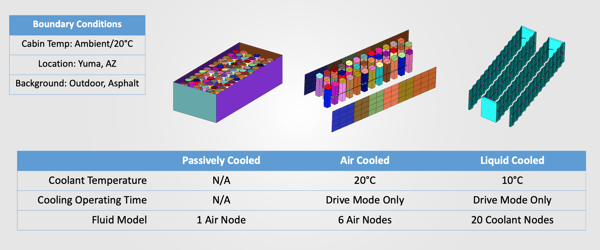In many ways, an electric vehicle (EV) is mechanically simpler than a car with an internal combustion engine (ICE). An electric motor has fewer moving parts than an ICE and less maintenance required to keep it performing for the vehicle’s lifetime. However, consumers still carry concerns about the expected span of the electric car’s battery life. To be sure, replacing an electric vehicle’s battery is an expensive proposition. For example, a new battery pack for a Chevrolet Bolt EV is reportedly priced at more than $15,000, not including labor costs.
Since electric car batteries are expensive to replace, should this cause concern? When you first bought your most current smartphone, you were probably delighted to have a device that would last the entire day. Two years later, however, you’re likely to endure the same frustration you had with your previous phone, a dead battery before dinner.
This issue has altered how people view lithium-ion batteries’ lifespan and created a common concern for those seeking to buy electric vehicles.
Lithium-ion batteries offer good energy density and are (relatively) lightweight, allowing for the maximum amount of range for any battery. While the batteries themselves may be similar, how they are discharged, recharged, and thermally managed makes a big difference in their lifespan.
Creating Better Charging Cycles for EV Batteries
Cell phones have small batteries for their compact form. To maximize how long you can use your phone with such a small energy source, manufacturers allow customers to utilize the entire battery, from 100% to 0%.
Recharging from 0% back to 100% is one of the most intensive use cases for lithium-ion batteries. One such safeguard manufacturers of electric vehicles use is a battery buffer. A battery buffer helps protect against severe degradation. Essentially, drivers cannot use all the electricity stored in their car’s battery. When the car shows you that there’s no charge left in the battery, there will be a buffer of power left to prevent the complete charge cycle that would accelerate battery degradation.
Thermal Management of EV Batteries
Another protection manufacturers of electric vehicles use to control battery degradation is thermal management. Lithium-ion batteries operate best around 70 degrees Fahrenheit, but temperatures this high will significantly degrade the battery. Battery lifetime is thus a trade-off with battery performance.
While cold temperatures momentarily reduce range and performance, they don’t diminish battery life as high temperatures do. Operation at high temperatures can expedite battery degradation, which is why we use a simulation approach that considers the thermal management of the battery using transient analysis.
Our Simulation Process
To get a clear picture of what the life of an electric battery could look like, we use a simulation process that includes the vehicle drive cycle and coupled transient modeling to increase accuracy and produce real results. We start with a vehicle drive cycle to generate a battery power profile. The battery profile is then used as an input in the thermal model to generate battery stress statistics. The stress statistics are then used in the NREL Battery Life Model to create lifetime statistics (relative capacity and relative resistance). The solution is coupled using the TAITherm Battery Extension and the NREL Battery Life Model at each lifetime step.
We utilize our fast, transient thermal solver to accurately model the effects of radiation. Radiation causes temperature gradients inside battery packs that cause imbalanced aging. This type of analysis cannot be captured with a 1D solver.
Case Study
Since thermal management is crucial for optimal life, we looked at three different cooling scenarios for an electric vehicle battery: passively cooled, air-cooled, and liquid-cooled.

We simulated an ambient cabin temperature of 20°C, with a location of Yuma, AZ on an asphalt surface.
The simulation was run using a transient drive cycle over four different months.

The ambient temperature affects how the battery temperature will heat up or cool down when the vehicle is not in use. When the car is in use, the batteries’ thermal management depends on the cooling system’s effectiveness.
With an appropriate cooling system, you can extend life. A suitable cooling system is vital when you consider the various regions where a vehicle will be used. What is predicted for lifetime may not be accurate for specific locations if they are not first simulated. OEM’s must weigh the warranty claim based on geographic location.

Geographic Thermal Considerations
Our case study also looked at how weather affects the battery's life. We found it vital to consider the weather for modeling accuracy. For example, solar loading has a notable impact on pack temperatures. This difference is significant in the summer months due to the road surfaces' heat-up and the vehicle cabin's greenhouse effect.

Forgoing the effects of weather may lead to under-prediction of pack temperatures that could result in safety concerns and over-prediction of a lifetime. This case study shows an over-prediction of 1.3 years for a passively cooled battery. TAITherm comes pre-loaded with helpful weather files to assist in your analysis.

Our case study also revealed that specific cooling strategies (air-cooled in this case) could cause non-uniform temperatures, which will cause the cells to age at different rates. This imbalance causes a state of charge imbalance and results in incomplete charging or discharging.

Coupling Matters
Adding this type of coupled simulation improves the accuracy of your analysis. This type of accuracy helps you see how the state of charge and temperature evolve as capacity fades and internal resistance grows. Neglecting a proper simulation strategy using co-simulation can lead to lifetime over-predictions and failure to ensure that a battery pack will meet warranty requirements.
It is essential to ensure that your simulations will yield the best results. Be sure you understand the effects your assumptions can have on your simulation results. Transient simulations with TAITherm can be fast enough to fit into your design time and offer you increased accuracy. Our simulation process is designed to help you predict an accurate lifetime for your electric vehicle battery and help provide answers for key decision-makers on warranty and other customer-facing considerations.
If you want to learn more about using TAITherm to maximize your transient simulations, please feel free to request a live demo of our software.
Visit our website at suppport.thermoanalytics.com for
- FAQs
- Webinars
- Tutorials
Get help from our technical support team:
References for Data Used in Our Case Study
Smith, K., et al. (2010). “Design of Electric Drive Vehicle Batteries for Long Life and Low Cost”. IEEE Accelerated Stress Testing and Reliability Conference, October 6-8, 2010, Denver, CO. NREL/PR-540-48933.
Belt, J.R. (2008). “Long Term Combined Cycle and Calendar Life Testing”. 214th Meeting of the Electrochemical Society, October 13-16, 2008. INL/CON-08-14920.
Smith, K., et al. (2010). “Performance/Life/Cost Tradeoff Analysis for PHEV Batteries”. DOE Milestone Report, ID 42096, June 30, 2010.

